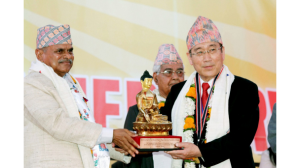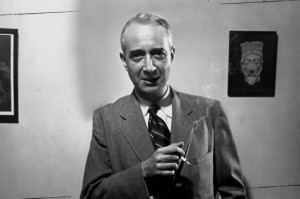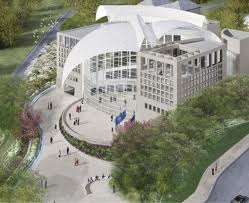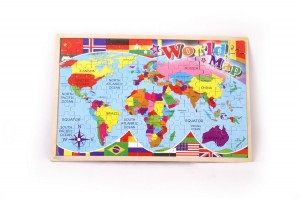Note, this post originally appeared at SmartBlog Education on February 7th, 2013 and can be accessed here to see comments and explore the SmartBlog website. What is below has additional information not found at SmartBlog.
Engaging students in the process of constructing understanding and meaning of the past is a central act of history education. To do so demands a paradigm shift for students who have been taught to consider the past as an established external truth that is to be memorized. Moving from a history/memorize/noun to history/construct/verb model is facilitated by teaching the concept of “historical narrative.” In my experience, this is an incredibly exciting, relevant and rigorous way to teach about the past.
Teaching history through narratives focuses on knowledge construction, resource evaluation and active learning. These skills speak to the demands of the Common Core State Standards Initiative, global competency and 21st-century education. Furthermore, considering alternative historical narratives invites collaborative practice, research and technology integration. Students can engage with narratives and analyze the power structures and purpose of dominant and marginalized histories. For example, contrasting the “official, master narrative” found in state standards and textbooks with “alternative narratives” introduces students to perspectives beyond nationalized history. Moreover, this celebrates creative and critical thinking.
The February 2013 issue of Smithsonian article “When Did Humans Come to the Americas?” notes, “The peopling of the Americas, scholars tend to agree, happened sometime in the past 25,000 years.” The dominant theory, the Clovis theory, over time, acquired the force of dogma. “We all learned it as undergraduates,” one scholar recalled. “Any artifacts that scholars said came before Clovis, or competing theories that cast doubt on the Clovis-first idea, were ridiculed by the archaeological establishment, discredited as bad science or ignored.” Presently those alternative theories, depicted in the map below, carry more weight and successfully challenge the primacy of the Clovis theory. “Take South America. In the late 1970s, the U.S. archaeologist Tom D. Dillehay and his Chilean colleagues began excavating what appeared to be an ancient settlement on a creek bank at Monte Verde, in southern Chile…The excavators found cordage, stone choppers and augers and wooden planks preserved in the bog, along with plant remains, edible seeds and traces of wild potatoes. Significantly, though, the researchers found no Clovis points. That posed a challenge: either Clovis hunters went to South America without their trademark weapons (highly unlikely) or people settled in South America even before the Clovis people arrived. There must have been “people somewhere in the Americas 15,000 or 16,000 years ago, or perhaps as long as 18,000 years ago.” This map shows some main contemporary theories challenging the Bering Sea Ice Bridge story.

Most analyses of contemporary and ancient human DNA suggest that America’s first immigrants came from Asia. They traveled over a land bridge or along the coast. An alternative theory is that members of Europe’s Solutrean culture voyaged to the East Coast.
So, what are some fruitful areas of unlearning/learning found in U.S. History courses? Below are three typical units used in high-school U.S. history courses. The section after suggests ways to rethink the standard narrative found in textbooks.
Standard Narrative Examples
Consider these descriptions of extended lessons found in textbooks used at multiple levels (standard, honors, AP, IB, etc.) in our high schools. Quotes are taken directly from textbooks.
1. The Imperialist Vision
“During the late 1800s, the desire to find new markets, increase trade, and build a powerful navy caused the U.S. to become more involved in international affairs.”
2. American Interwar Isolationism: 1918-1940
“With the international system of the 1920s now beyond repair, the United States faced a choice between more active elements to stabilize the world and more energetic attempts to isolate itself from it. Most Americans unhesitatingly choose the latter.”
3. Cold War
“… an era of confrontation and competition between these two nations (the USA and USSR) that lasted from about 1946-1990 … became known as the Cold War.”
Alternative Narrative Options
British Historian Richard Overy reminds us that history “at its best is critical, exciting, thought-provoking, frustratingly ambiguous and uncertain … If history becomes just heritage studies, the collective intelligence will be all the poorer.” In turn, provocative questions and multiple perspectives are cornerstones of effective history instruction. Below are valid alternative narratives corresponding to the standard ones above.

Overy’s work on World War II has been praised as “highly effective (in) the ruthless dispelling of myths.”
1. Empire in U.S. History
When the United States became independent, George Washington and Thomas Jefferson talked about the United States becoming a powerful empire in the future. To achieve this goal, the United States expanded its borders, influence, and power around the globe. For example, the United States was victorious in a war with Mexico (1846-1848) and continuous wars with Native Americans. Both campaigns expanded the nation’s western border across the continent.
2. The Myth of U.S. Isolationism
U.S. interwar intervention existed in the Dominican Republic (1916-1924), Guatemala (1920), Honduras (1919, 1924, 1925), Panama (1921, 1925), and Haiti (1915-1934). Whether defined as militaristic, political, economic, or cultural, U.S. intervention was the norm, not the exception, in the 1920s and 1930s.
3. Beyond the Cold War Binary
The Cold War was the name given to the international world order that lasted from 1945-1991. From the destruction of World War II, two “super powers,” the USA and the Soviet Union, led two blocs of contending nations. A third group, the Non-Aligned Movement, did not formally have a desire to be involved in the Cold War. Main countries involved included Indonesia, India, Yugoslavia, Egypt, and Ghana. However, membership expanded to nearly 100 nations during the Cold War. During the Cold War, these three groups were called the First, Second, and Third World. Scholar Odd Arne Westad in his award winning work The Global Cold War points out that the term “Cold War” “came to signal an American concept of warfare against the Soviet Union.. the Soviets….never used the term officially before the Gorbachev era.” Instead the USSR used a narrative of Western imperialism. Therefore the term “Cold War” has limitations to explaining the global order and geo-politics.
The ubiquity of standard narratives reinforces a history that is rarely, if ever, challenged. In fact, more nuanced, analytical responses on standardized tests that challenge these perspectives would be penalized or marked as wrong. These narratives are no longer needed as an assimilating identity tool. Contemporary education as well as the dynamics of globalization call for the skills, content and thinking addressed by using alternative historical narratives. So, what parts of the U.S. master narrative can you problematize?

















